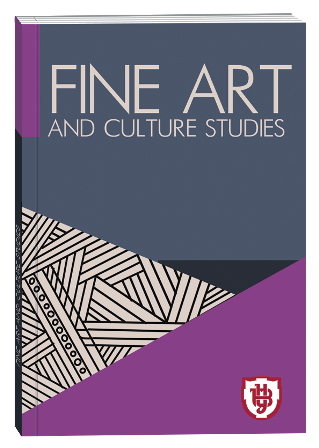DANCE AS A FORM OF ARTISTIC THINKING AND CULTURAL COMMUNICATION
DOI:
https://doi.org/10.32782/facs-2023-4-26Keywords:
dance as a socio-cultural phenomenon, corporeality, thinking, artistic communication, cross-cultural approachAbstract
Corporeality is the primary reality and basic characteristic of human existence in the world; it combines material and mental factors of human development of the world. Modern interpretations of corporeality provide for multidisciplinary approaches and alternative discourses for understanding bodily-communicative strategies of human creativity, for searching for adequate models of their implementation. In this context, dance is considered as an effective bodily-communicative and mental practice, as a truly human way of unfolding human presence in the world. The purpose of the article is to analyze the concepts of dance, physicality and thinking in the context of cultural formation and artistic communication. Scientific novelty. It is substantiated that dance, plastic-bodily procedural forms of thinking are able to adequately and dynamically express a holistic experience of presence in the world. Dance is conceptualized as a cultural phenomenon, as a form of artistic thinking and communication. In the conclusion, it is noted that dance, physicality and thinking should be considered in an essential relationship, which makes it possible to understand cultural reality as a communicative space in its transfigurative procedurality. Corporeality in dance presents not only an objective dimension, but also a mental space. Forms and procedures of thinking create a certain picture of the world, worldview and worldview. Its adequacy to material and existential reality depends on the accepted and dominant mental ways of understanding reality and man in the culture. Dance is actually a human movement, a direct and concrete manifestation of human existence. Such a methodological position does not offer a ready-made and complete model of the world and man, but a rather changeable and plastic metamorphosis of the unfolding of reality on both the individual and universal levels. The dancing person and the world appear through the prism of bodily-plastic characteristics in dialogic cross-cultural communication, which contributes to the formation of a conscious attitude and respect for various cultural and life strategies.
References
Барба Е. Паперове каное: Путівник по театральній антропології. Львів: Літопис, 2001. 288 с.
Барт Р. Від твору до тексту. URL: https://stud.com.ua/42323/filosofiya/bart_tvoru_tekstu (15.09.2023).
Бодрійяр Ж. Символічний обмін та смерть URL: https://www.ukrlib.com.ua/world/printit.php?tid=2266 (15.09.2023).
Бодрійяр Ж. Симулякри і симуляція. Київ: Основи, 2004 р. 230 с.
Гомілко О. Метафізика тілесності. Дослідження, роздуми, екскурси. К. : Наук. думка, 2001. 306 с.
Енциклопедія постмодернізму. К.: Основи, 2003. 503 с.
Леонова С. Є. Символіка тілесності у сучасній театральній хореографії (на прикладі М. Ека). The Journal of V. N. Karazin Kharkiv National University. Series "Theory of Culture and Philosophy of Science. № 958 (1). P. 17-21.
Мерло-Понті М. Феноменологія сприйняття. К., 2001. 552 с.
Ніцше Ф. По той бік добра і зла. Львів, 2002. 320 с.
Ніцше Ф. Так казав Заратустра. К., 1998.
Ортега-і-Гасет Х. Кант: роздуми до роковин. Пер. В. Сахна. Вибрані твори. К.: Основи, 1994. 424 с. С. 205–226.
Соболь О. Фрідріх Ніцше і апокаліпсис метафізики. Постмодерн і майбутнє філософії. К.: Наук. думка, 1997. С. 68–75.
Baudrillard, Jean. L'échange symbolique et la mort. Gallimard, Paris 1976. 347 p.
Deleuze G. Logique du sens. Paris, Ed. de Minuit, coll. «Critique», 1969. 392 p.
Deleuze G. Nietzshe. PUF, 2015. 108 p.
Deleuze G. Nietzshe and philosophy. New York: Columbia univ.press., 1983. 392 р.
Merleau-Ponty, M. Phenomenology of Perception. Translated by Colin Smith. London – New York, 1962. 544 p.
URL: https://voidnetwork.gr/wp-content/uploads/2016/09/Phenomenology-of-Perception-by-Maurice-Merleau-Ponty.pdf (25.09.2023).
Schopenhauer A. The World as Will and Representation, Volume 1. Cambridge: Cambridge University Press, 1914.
Valéry P. Dance and the Soul. (1951). J. Lehmann [in French].
Valeri P. Moncieur Teste. URL: http://ugo.bratelli.free.fr/ValeryPaul/Valery-MonsieurTeste.pdf (25.09.2023) [in French].







